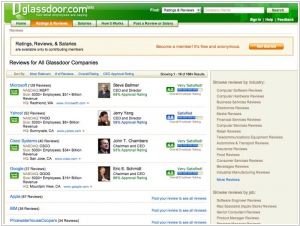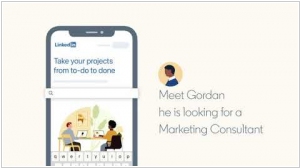Glassdoor vs LinkedIn
July 25, 2023 | Author: Adam Levine
Glassdoor and LinkedIn are both popular platforms that serve different purposes within the realm of career development and job searching. Glassdoor is primarily a job and company review website, where employees and former employees can anonymously share insights about their work experience, salaries, and company culture. It is valuable for job seekers who want to gain an inside look at potential employers and make informed decisions about their career choices. On the other hand, LinkedIn is a professional networking platform that connects individuals with others in their industry or field. It allows users to showcase their skills, experiences, and accomplishments, making it a powerful tool for building professional connections and discovering job opportunities. Both platforms offer unique advantages; Glassdoor provides valuable company insights, while LinkedIn fosters networking and personal branding opportunities. Job seekers often benefit from using both platforms in their job search and career development strategies.
See also: Top 10 Job Search sites
See also: Top 10 Job Search sites
Glassdoor vs LinkedIn in our news:
2024. LinkedIn wants to add gaming to its platform
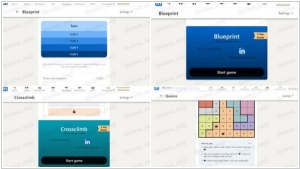
LinkedIn, the social platform owned by Microsoft renowned for networking, professional development, and recruitment, boasting over 1 billion users, is venturing into gaming to enhance user engagement. Introducing a new gaming experience, LinkedIn aims to inject fun into its platform, foster deeper connections, and encourage meaningful conversations. Drawing inspiration from the viral success of puzzle games like Wordle, LinkedIn's initial forays into gaming include titles such as “Queens”, “Inference”, and “Crossclimb”. One intriguing aspect of this venture involves organizing player scores by workplaces, potentially ranking companies based on these scores, thus adding a competitive element to the professional networking arena.
2021. LinkedIn rolls out its freelance services marketplace
LinkedIn is expanding its presence in the freelance job market with the introduction of its Service Marketplace. This new feature enables individuals to promote their skills for short-term projects, directly competing with platforms like Fiverr and Upwork for sourcing talented knowledge workers. The launch of the freelancer platform is accompanied by other significant updates from LinkedIn, reflecting the company's efforts to adapt to emerging job market trends and changes in the way we work. These updates include enhanced search filters for finding permanent jobs that are remote, hybrid, or on-site. Users can now indicate their job preferences, such as remote work, through the "Open to Work" indicator to invite recruiters to connect. Additionally, job seekers can now review companies' vaccination requirements as part of their evaluation process, if the employer has provided that information.
2020. LinkedIn adds polls and live video-based events in a focus on more virtual engagement
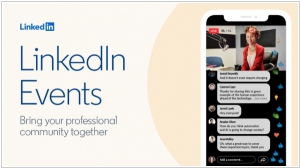
LinkedIn has recently introduced two new features: the Polls feature and the "LinkedIn Virtual Events" tool. The Polls feature enables users to conduct surveys and gather feedback from their connections. Additionally, LinkedIn's Virtual Events tool allows individuals to create and live-stream video events directly on the platform. Interestingly, despite being owned by Microsoft, it appears that the Virtual Events service does not integrate with Teams or Skype, Microsoft's prominent video products. This is noteworthy considering the surge in video streaming usage for work, education, and leisure activities. The Polls feature offers a simple and accessible method for asking questions and promoting user engagement.
2018. LinkedIn launches Talent Insights
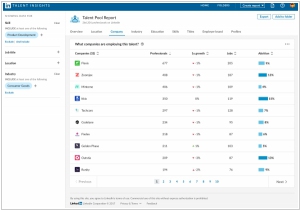
LinkedIn has introduced a new feature called Talent Insights, consisting of two components: "Talent Pool" and "Company Report." The Talent Pool feature allows businesses to conduct searches across the LinkedIn database to identify potential candidates who possess similar characteristics to their existing hires. It provides insights on their current location, company affiliations, career movements, shared skills, and potential for growth. On the other hand, the Company Report feature offers analytics about your organization and enables you to compare it with others in various aspects, such as education levels and schools attended by employees, skills gaps, and more. These data tools provide valuable information for talent acquisition and workforce analysis.
2017. LinkedIn launched own advertising network
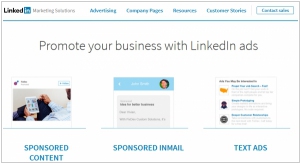
LinkedIn introduced LinkedIn Audience Network, a novel service enabling advertisers to purchase inventory on a network of mobile sites and apps outside of LinkedIn while leveraging LinkedIn's demographic data. This network enables the dissemination of Sponsored Content, which refers to updates posted by companies containing reports, links, or other promotional material that companies pay to promote. Initially, the LinkedIn Audience Network encompasses a wide array of global sites, apps, and ad exchanges including MoPub, Sharethrough, Google Ad Exchange, Rubicon, and Microsoft-owned services such as MSN.com and Outlook.com. The audience network will be launched first in all English-speaking countries and gradually expanded worldwide.
2017. Microsoft integrated LinkedIn with Dynamics 365
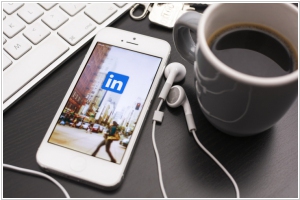
Microsoft has unveiled significant integrations between its acquired professional social network, LinkedIn, and Microsoft Dynamics 365, the company's comprehensive CRM and ERP suite. These integrations bring forth several noteworthy enhancements. Firstly, Microsoft is bridging the gap between Dynamics 365 and the LinkedIn Sales Navigator tool, enabling sales professionals to leverage LinkedIn's extensive database of 500 million users. This integration empowers sales teams with valuable insights and connections to enhance their customer engagement strategies. Furthermore, Microsoft is introducing a specialized tool within Dynamics 365 for HR professionals, known as Dynamics 365 for Talent. This tool enables users of Dynamics 365 ERP to seamlessly access LinkedIn's Recruiter and Learning solutions. HR professionals can now conveniently search for new talent directly from LinkedIn and effectively manage employees throughout their entire journey with the company, from recruitment to ongoing development and engagement. By merging the power of LinkedIn and Microsoft Dynamics 365, Microsoft aims to provide enhanced capabilities for sales teams and HR professionals, fostering improved customer relationship management and talent acquisition processes. These integrations signify Microsoft's commitment to delivering comprehensive solutions that streamline business operations and leverage the vast potential of professional networking platforms.
2016. Salesforce wants to block Microsoft acquisition of LinkedIn
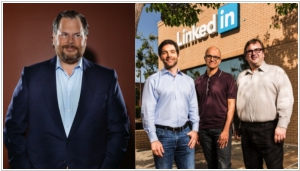
The once-prominent alliance between Salesforce and Microsoft has abruptly come to an end after a mere two years. In the not-so-distant past, Marc Benioff and Satya Nadella posed for selfies and appeared to be inseparable friends. However, Microsoft's actions have been perceived as a betrayal. Their introduction of Dynamics 365, a comprehensive cloud-based CRM/ERP system, marked the first blow as it directly positioned itself as a competitor to Salesforce. Subsequently, Microsoft's acquisition of LinkedIn, the professional social network, further strained the relationship. As a result, Salesforce is actively urging US and European regulatory bodies to meticulously scrutinize the deal, citing concerns that it "jeopardizes future innovation and fair competition." Benioff asserts that Microsoft's ownership of LinkedIn's vast dataset, comprising more than 450 million professionals across 200 countries, may grant them an unfair competitive edge by denying competitors access to this valuable resource.
2016. LinkedIn unveiled e-Learning service
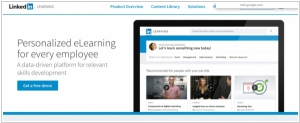
The business-oriented social network LinkedIn, now under Microsoft's ownership, has introduced a new e-learning platform called LinkedIn Learning. This comprehensive portal offers a vast array of online courses spanning various subjects, including coding and accounting. LinkedIn Learning is built upon the foundation of Lynda.com, a startup that was acquired by LinkedIn the previous year. Users have the flexibility to choose courses independently or have them assigned by their employers. To track employee progress, employers can leverage LinkedIn's analytics tools. LinkedIn Premium subscribers can access the education platform for free, with the added benefit of receiving 25 new courses every week.
2015. Job site Glassdoor raises $70 million from Google and others
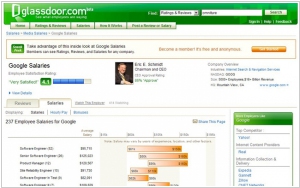
Glassdoor, the renowned US job site renowned for its anonymous employee reviews, has secured $70 million in funding to further enhance its job search and recruitment tools for both employees and employers. The latest funding round was led by Tiger Global and Google Capital, the growth fund of Google. Established in 2007, Glassdoor gained prominence through its extensive collection of anonymous (and seemingly candid) employee reviews and company ratings. Additionally, it has developed a job search engine and recruitment tools for employees, which are expected to contribute significantly to its revenue growth. Furthermore, Glassdoor has recently invested in optimizing its website and app for international markets.
2014. Evernote and LinkedIn integrate business cards into social network
Business card scanning apps have been available on the market for some time, including popular ones like Evernote. These apps offer a convenient solution for business professionals overwhelmed by overflowing wallets filled with business cards. However, they fail to address a significant challenge: contact information often changes over time. Thankfully, social networks, particularly LinkedIn, have resolved this problem by enabling individuals to update their own contact details, which are automatically synced with their friends' address books. Recently, LinkedIn integrated with Evernote, resulting in a seamless experience. Now, all you need to do is capture a photo of a business card, and your smartphone instantly displays the person's LinkedIn profile. From there, you have the option to connect with the CEO, secretary, or digital prophet on LinkedIn, or add their contact information to your address book. However, the real intrigue begins as your business relationship develops. Over time, you can enrich the card's page in Evernote by adding audio recordings from meetings, relevant documents, or even key emails exchanged with that individual.

